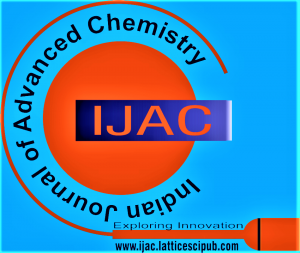![]()
A Techno-Economic Feasibility Study: Carboxymethyl Cellulose Production from Date Palm Biomass for Industrial Applications
Wafaa, M. Osman1, Ahmed A. I. Elrayah2, Abdullah, B. Karma3, Amel, A. Nimir4
1Wafaa M. Osman, Department of Downstream General Directorate, Refining and Petrochemical, Ministry of Energy and Petroleum, Khartoum, Sudan.
2Dr. Ahmed A. I. Elrayah, Department of Petroleum Engineering, Sudan University of Science and Technology, Khartoum, Sudan.
3Abdullah B. Karma, Associate Professor, Department of Chemical Engineering, Karry University, Khartoum, Sudan.
4Amel, A. Nimir, Department of Refining and transportation, Sudan University of Science and Technology, Khartoum, Sudan.
Manuscript received on 23 March 2025 | First Revised Manuscript received on 06 April 2025 | Second Revised Manuscript received on 09 April 2025 | Manuscript Accepted on 15 April 2025 | Manuscript published on 30 April 2025 | PP: 8-17 | Volume-5 Issue-1, April 2025 | Retrieval Number: 100.1/ijac.A202905010425 | DOI: 10.54105/ijac.A2029.05010425
Open Access | Ethics and Policies | Cite | Zenodo | OJS | Indexing and Abstracting
© The Authors. Published by Lattice Science Publication (LSP). This is an open access article under the CC-BY-NC-ND license (http://creativecommons.org/licenses/by-nc-nd/4.0/)
Abstract: This research focuses on a techno-economic process of building and designing equipment for isolating polymers from local resources for industrial purposes; the objective was to increase national revenues from the utilization of native resources and a reduction in the cost and foreign dependence on imported polymers. The study had an aim of synthesizing and characterizing CMC from leaves of Phoenix dactylifera L. (date palm) through the process of etherification using sodium monochloroacetic acid and sodium hydroxide. The optimization of parameters included a temperature of 55°C, and a total reaction time of 4 hrs., providing the highest degree of substitution (DS) at 0.77. Models of a material balance and heat generation were derived from the reactor’s operational performance and were developed to determine the mechanical design of the reactor, the reactor volume calculated out to be 2435.26 dcm³, reactor capital cost, and the economic viability of the plant. Taking all equations into account, with equipment costs amounting to $103,823.5 and total capital investment of $233,311.24. The study analyzed five different priceevaluation-and-feasibility scenarios until it arrived at the conclusion that it had become economically feasible to produce approximately 3000 tons/year of sodium carboxymethyl cellulose with 4 batches per day/three-hundred-day operation year (plus 60 maintenance days) each. The given cost-and-profit analysis considered critical criteria such as raw-material cost, labor cost, selling price for the product, and process optimization. This highlighted the very encouraging financial effects the production of CMC propelled forward to an overall worth. Lastly, the review also dealt with issues of environmental compliance, regarding the manufacture of sodium carboxymethyl cellulose (CMC).
Keywords: Sodium Carboxyl Methylcellulose, Date Palm, Production Process, Production Cost, Economic Evaluation, Feasibility Scenarios.
Scope of the Article: Chemical Engineering
